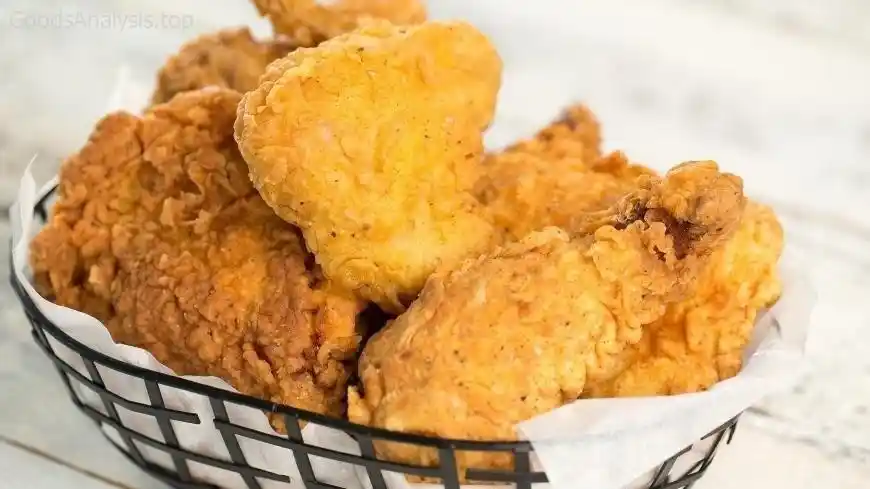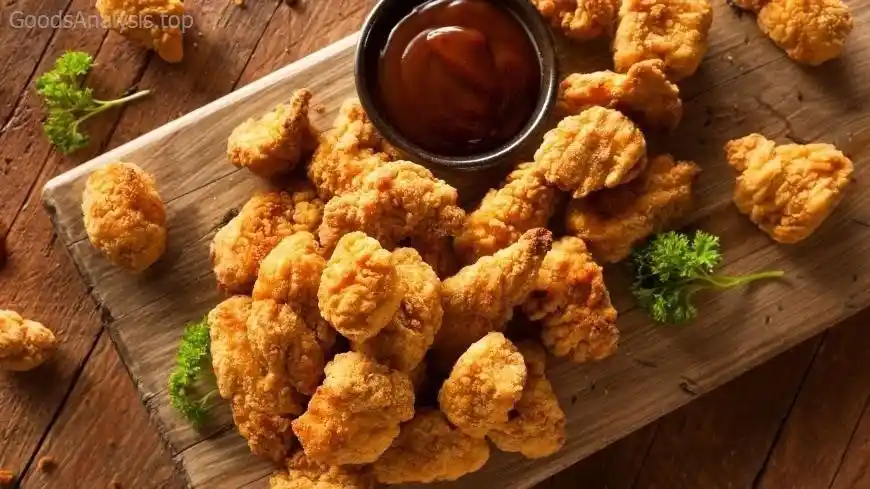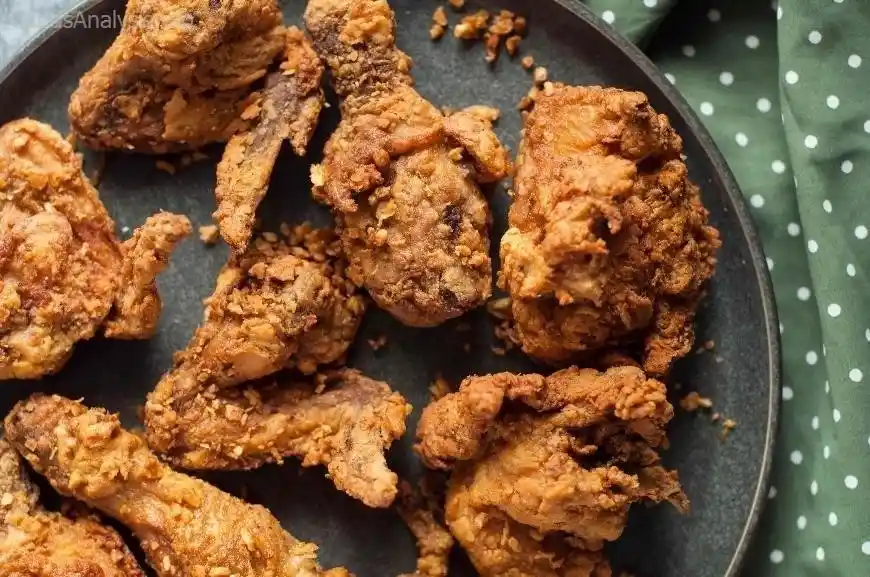Fried chicken – it’s more than just food, it’s an experience. Whether you’re from the Southern United States, the streets of Seoul, or the busy neighborhoods of Lagos, fried chicken has a special place in kitchens all around the world. But making it? Well, that’s another story. It can be a delicate art, requiring the perfect balance of crispy, golden-brown skin, juicy, tender meat, and the right blend of spices. Get it wrong, and you’ll be left with a greasy, bland mess. But get it right, and you’ve got a meal that can bring families together, make friends out of strangers, and even make you famous at the neighborhood potluck.
So, if you’re ready to take your fried chicken game to the next level, let’s break it down—step-by-step—based on years of tried-and-true methods, reliable culinary science, and a good dose of humor.
The Basics: What You Need to Know
The Chicken
First things first: quality matters. Sure, you could grab a pack of frozen chicken parts, but if you really want to impress, go for fresh, high-quality chicken. Bone-in chicken (drumsticks, thighs, wings, or whole pieces) is generally better than boneless. The bone helps keep the meat moist, and let’s face it, it’s what makes fried chicken so comforting. Also, the skin? That’s where all the crispy goodness happens. Choose skin-on pieces for the best results.
The Marinade (Why It’s Crucial)
Ah, the marinade. You might think you can skip this step, but let me tell you—it’s a game changer. A good marinade helps tenderize the chicken, making it juicier and more flavorful. It also allows the seasonings to really penetrate the meat, not just sit on top like an afterthought.
Basic Marinade Ingredients:
- Buttermilk: The acidity of buttermilk (or regular milk with a bit of lemon juice) breaks down the chicken’s proteins, making it tender and juicy.
- Salt: It pulls moisture from the chicken, then reabsorbs it, which makes the meat flavorful and juicy.
- Spices: Garlic powder, onion powder, paprika, black pepper, and cayenne pepper are classic go-tos. Add a little thyme or rosemary for a more aromatic experience.
- Hot sauce: A dash of hot sauce can add a little kick to the flavor, but it’s not necessary if you’re not into heat.

Let the chicken marinate in this mixture for at least 2 hours—longer if possible (overnight is ideal). Trust me, it’s worth the wait.
The Coating: The Secret to Crispiness
Now, here’s where things get interesting: the coating. You need the perfect batter to give your chicken that crispy, golden crust without it turning soggy or too greasy.
Ingredients for the Coating:
- Flour: All-purpose flour is a must. It’s a great base that will crisp up nicely.
- Cornstarch: This is a little secret many pros use. It helps to lighten the batter and makes it even crispier.
- Baking powder: This gives the crust a little lift, keeping it light and airy.
- Seasonings: A little salt, pepper, paprika, garlic powder, and onion powder for a classic flavor. You can also add cayenne for heat or any other spices you love.

Mix your dry ingredients in a shallow dish, and then take the marinated chicken pieces and dredge them in the flour mixture. Make sure you press the coating onto the chicken to really get it to stick. Some people like to dip the chicken in a second layer of buttermilk and then the flour again for an extra-thick crust, but this is optional.
The Frying Process: Getting the Temperature Right
This is arguably the most crucial step. Too high, and your chicken burns on the outside before cooking through. Too low, and it soaks up oil, leaving you with a greasy, soggy mess. So, let’s talk temperature.
You’ll want to heat your oil to about 350°F (175°C). A deep fryer is ideal for this, but a heavy pot or Dutch oven will work just as well. Use vegetable oil, peanut oil, or canola oil, as these have high smoke points and won’t burn at high temperatures.

If you don’t have a thermometer (which, let’s face it, happens more often than we’d like), you can test the oil by dropping in a small bit of bread. If it browns in about 60 seconds, your oil is at the right temperature.
Carefully add the chicken to the hot oil—don’t crowd the pot. Crowding the pan lowers the temperature and can result in uneven cooking. Fry the chicken in batches, turning occasionally, until it reaches an internal temperature of 165°F (75°C). This should take about 10-15 minutes, depending on the size of the pieces.
Draining and Resting
Once your chicken is golden and cooked through, remove it from the oil and place it on a wire rack (not paper towels). The rack allows air to circulate around the chicken, keeping the crust crispy. Let it rest for a few minutes before serving, so the juices can redistribute throughout the meat.
Serving Suggestions and Pairings
Fried chicken is so versatile that it pairs with almost anything. From mashed potatoes and coleslaw to cornbread or a simple green salad, the possibilities are endless. For something a little different, try serving it with a drizzle of honey, a splash of hot sauce, or even a squeeze of fresh lemon for a burst of brightness.

Common Pitfalls and How to Avoid Them
Even the most experienced cooks can run into a few issues when making fried chicken. Here are some of the most common mistakes and how to avoid them:
- Soggy Crust: If your crust turns out soggy, the oil was likely too cool. Make sure to keep an eye on the temperature. Also, avoid over-soaking the chicken in the marinade.
- Overcooked Meat: If your chicken is dry or overcooked, the oil may have been too hot. Lower the heat slightly to ensure that the chicken cooks through without burning the exterior.
- Greasy Chicken: Chicken sitting in too much oil can absorb it, leaving you with a greasy meal. Use a wire rack for draining, not paper towels. This helps prevent the chicken from sitting in its own oil.
What People Are Saying About Fried Chicken
Let’s see what others have to say about this culinary delight from all around the world.

- Anna, 42, USA
“I’ve been making fried chicken for years, but the key I’ve learned is in the marinade. I always marinate mine overnight with buttermilk and spices, and the chicken comes out juicy every time. The coating is crucial too. I can’t skip the cornstarch!” - Mohammad, 55, Egypt
“Fried chicken is a special treat for my family. I love adding a little cumin and coriander to the coating for an Egyptian twist. It’s delicious! But I always fry in batches to avoid sogginess.” - Keiko, 38, Japan
“In Japan, we have ‘karaage,’ which is similar to fried chicken. The marinade is key, and I use soy sauce and sake along with garlic and ginger. We serve it with rice and pickles—so tasty!” - Carlos, 29, Brazil
“I’m from São Paulo, and we love our fried chicken with a side of farofa and a cold beer. The trick is getting the oil just right—too hot and it burns, too cold and it’s greasy. But when you get it right, it’s heaven.” - Amina, 63, Nigeria
“My family loves fried chicken, especially at celebrations. I use a little bit of thyme and curry powder in my seasoning to add a unique flavor. It’s important to let the chicken rest after frying to keep it juicy.”
Final Thoughts
Making fried chicken might seem like a simple task, but the nuances can make or break your dish. By focusing on key steps—like marinating, perfecting the coating, and getting the oil temperature just right—you’ll be well on your way to mastering this classic comfort food. Whether you’re cooking for a family dinner or a special gathering, fried chicken has a way of bringing people together in the most delightful way.
So get cooking, and don’t be afraid to experiment with different spices, marinades, and sides. After all, the beauty of fried chicken is that there’s no one “right” way to do it—just a lot of tasty ways!









